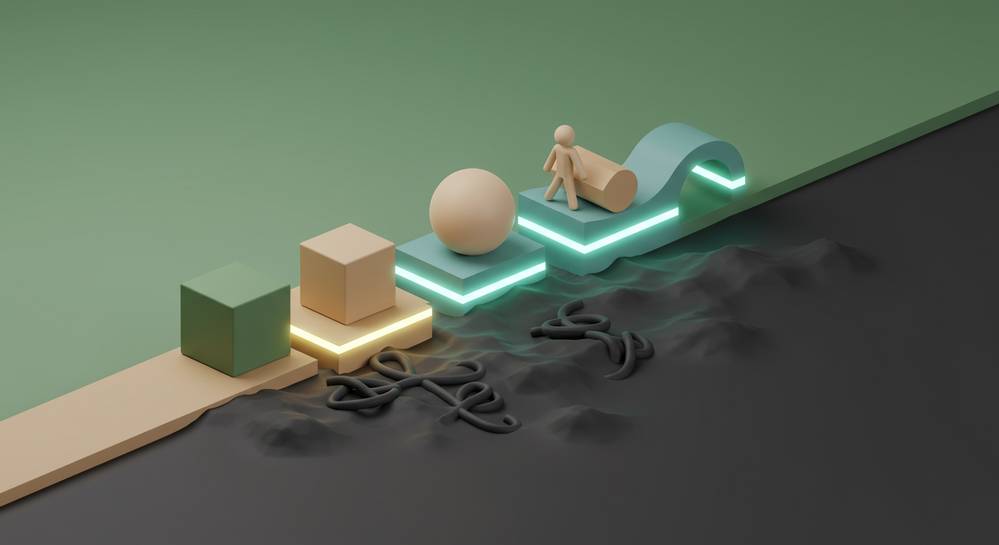Anxiety can feel like a constant, unwelcome companion, making everyday tasks seem overwhelming. The good news is that you have the power to manage it. Learning how to manage anxiety in daily life is not about eliminating it entirely but about developing the right tools to reduce its impact. This guide offers practical, actionable strategies to help you find calm and regain control, starting today.
Understanding the roots of daily anxiety
Anxiety is the body’s natural response to perceived threats, activating a fight-or-flight system. In modern life, this system is often triggered by non-physical threats like work deadlines or financial concerns. Understanding these personal triggers is the first active step toward management. It moves you from feeling overwhelmed to being in control.
Common sources of daily anxiety
To effectively manage anxiety, you must first identify what prompts it. These triggers often fall into three distinct categories:
- Internal Triggers: These originate from your thoughts and feelings. Negative self-talk, fearing future uncertainty, or replaying past events can create a persistent cycle of anxiety. These cognitive habits are powerful but can be changed.
- External Triggers: These are situational factors in your environment. A high-pressure job, conflict in relationships, or even the constant stream of negative news can act as significant stressors.
- Lifestyle Factors: Your daily habits build your resilience. Poor sleep, excessive caffeine, lack of physical activity, and an unbalanced diet can lower your threshold for stress.
By pinpointing these sources, you create a clear roadmap. This is foundational to learning how to manage anxiety in daily life effectively.
Immediate techniques to calm anxiety in the moment

When anxiety spikes, having immediate coping mechanisms is crucial. These tools interrupt the anxiety spiral before it takes hold, a key skill in learning how to manage anxiety in daily life. They work by shifting your focus from racing thoughts to your physical senses, which directly calms your nervous system and restores a sense of control.
Simple methods to regain calm
The following are two science-backed techniques that are both discreet and highly effective. They can be used anywhere to ground yourself in moments of distress.
- Box Breathing: This powerful breathing exercise helps regulate your nervous system. Inhale slowly for a count of four, hold your breath for four, exhale slowly for four, and hold again for four. Repeat this cycle until you feel your heart rate slow and your mind clear.
- The 5-4-3-2-1 Grounding Method: This technique pulls your attention back to the present. Acknowledge FIVE things you can see, FOUR things you can touch, THREE things you can hear, TWO things you can smell, and ONE thing you can taste. It forces your brain to focus on the external world, not internal fears.
Practicing these techniques regularly, even when you are not anxious, builds mental muscle. This makes them more instinctual and effective when you truly need them.
Lifestyle adjustments for long term anxiety management

While immediate techniques are vital, long term anxiety management requires consistent lifestyle adjustments. These changes build your overall resilience, making you less vulnerable to triggers over time. Focusing on foundational health pillars is a proactive approach to how to manage anxiety in daily life, creating a significant and lasting impact on your mental well-being.
The role of physical activity
Regular exercise is one of the most powerful tools for reducing anxiety naturally. It releases mood-boosting endorphins and helps lower the stress hormone cortisol. Aim for at least 30 minutes of moderate activity, like brisk walking or cycling, most days of the week. Consistency is more important than intensity for lasting benefits.
Optimizing nutrition and sleep
What you eat and how you sleep directly affect your mood and energy levels. Avoid high-sugar and processed foods that can worsen anxiety. Instead, focus on a balanced diet rich in whole foods. A lack of quality sleep is also a major contributor to anxiety. Establish a relaxing bedtime routine and aim for 7-9 hours of consistent sleep per night to support your overall well being.
Cognitive strategies to reframe anxious thoughts

Anxiety is often fueled by negative or irrational thought patterns. Cognitive strategies, inspired by Cognitive Behavioral Therapy, empower you to challenge and change these patterns. The goal is not to suppress thoughts but to assess them realistically and reduce their power. This mental reframing is a core component of how to manage anxiety in daily life for lasting calm.
Challenge and contain anxious thoughts
Start by practicing thought awareness. When you feel anxious, pause and identify the specific thought driving the emotion. Then, question its validity:
- Is this thought based on facts or feelings?
- Is there a more balanced or realistic way to view this situation?
- What is the actual likelihood of the worst case scenario happening?
Another powerful technique is to schedule a specific, limited period for worry. Set aside 15 minutes each day to consciously think about your concerns. When anxious thoughts arise outside this window, acknowledge them and defer them to your scheduled time. This simple practice helps contain worry and prevents it from dominating your entire day.
Successfully managing anxiety involves a blend of immediate coping skills, sustainable lifestyle habits, and a conscious effort to reframe your thoughts. By integrating these strategies into your routine, you can regain a sense of control and build lasting resilience against daily stressors. For more insights into mental and physical well-being, continue exploring resources on Blog Healthy 24h.
